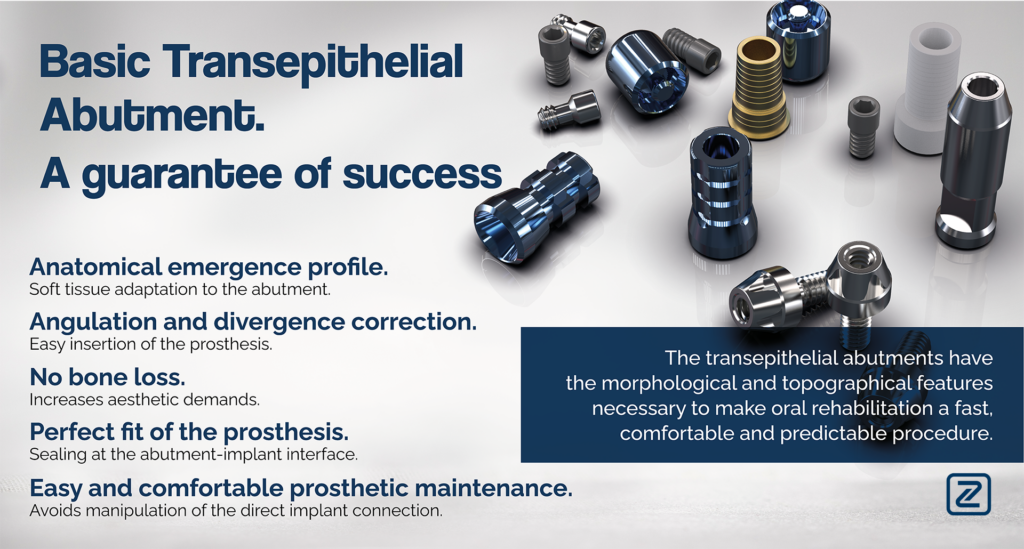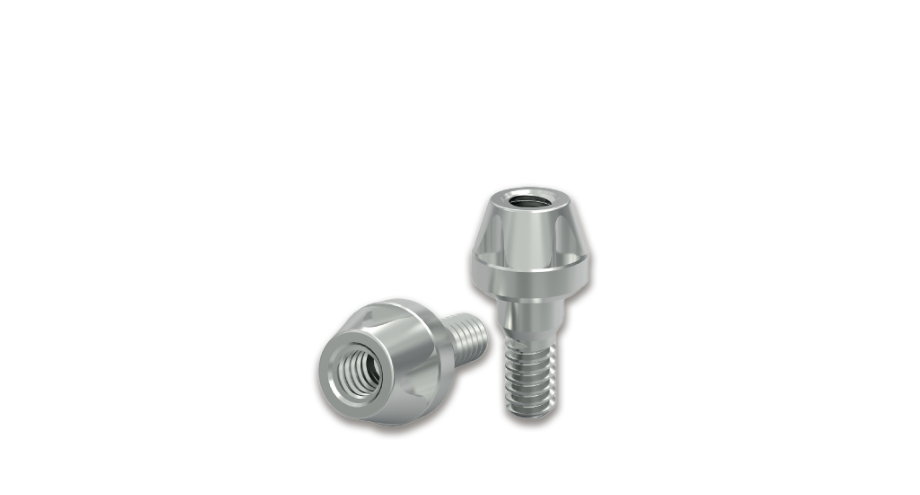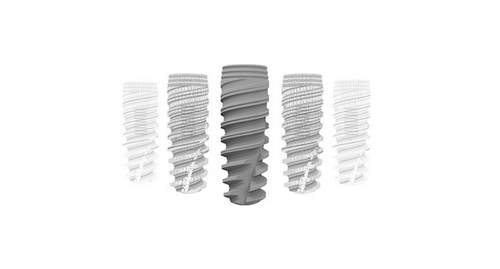The role of prosthetic components is decisive for the aesthetic and functional success of implant treatments, both in the short and long term. For this reason, transepithelial rehabilitation has become one of the most widely used practices in implantology.
Rehabilitation with transepithelials: no bone loss, no microleakage
With the aim of offering a solution to a wide range of clinical cases, transepithelial or intermediate abutments are designed for the following cases:
- Correcting angulations and improve precision. This ensures passive prosthetic fit and restorative flexibility for diverging implants.
- Guaranteeing a perfect fit of the prosthesis thanks to its interface, which suppresses micromovement and microleakage.
- To prevent soft tissue loss by moving the prosthetic connection away from the bone.
- Preserving the biological seal, reducing inflammation of the peri-implant tissue and the risk of peri-implantitis.
- Avoiding manipulation of the direct implant connection, making maintenance very convenient and easy.
- Sealing of the abutment-implant interface, which reduces bacterial infiltration: the possibility of bacterial migration through the abutments is eliminated.
- To adjust the biological width and improve the crown-to-radicular ratio.
We see that the main strength of transepithelial abutments is to ensure that, if there is a complication, it happens above the gum, so we can provide our patient with an easy and definitive solution.
Basic and XDrive: Ziacom transepithelial systems for successful oral rehabilitations
The Ziacom portfolio offers two options for performing oral rehabilitations with transepithelials: Basic, ideal for single cases, and XDrive, perfect for multiple rehabilitations with a universal connection.
Basic transepithelial abutment: high performance for your oral rehabilitations
The Basic transepithelial abutment from Ziacom is distinguished by:
- Narrow platform diameter: 3.9mm.
- Ideal for cases with compromised mesiodistal space.
- Anatomical emergence profile for better soft tissue adaptation.
- Increasing aesthetic demands.
- Adaptation of the soft tissue to the abutment.
- Different gingival heights.
- Correcting angulations and divergences to facilitate the insertion of the prosthesis.
- Resolving the depth of the implants.
- Equalising unevenness caused by bone atrophy in multiple prostheses.
XDrive System: simple and efficient dental rehabilitation solution for mult-unit screw-retained prosthetic structures
XDrive Intermediate Abutments allow to achieve immediate, surgical-successful prosthetics and aids temporisation for predictable and aesthetic results.
- They also guarantee:
- Precision in impression taking.
- Stability in the insertion.
- Adequate soft tissue healing.
- Precise fit.
Transepithelial abutments for successful short- and long-term surgeries
Transepithelial abutments have the morphological and topographical characteristics necessary to make oral rehabilitation a fast, comfortable and predictable procedure.
If you have any questions or would like more information about our Basic or XDrive transepithelial rehabilitation systems, please contact our Export Department.





